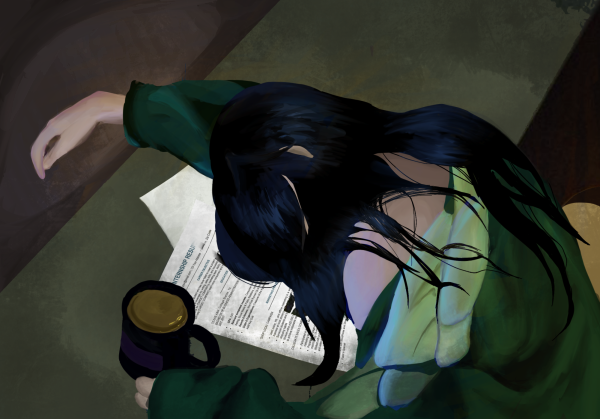Math Lacks Real Life Use
In the Acalanes Union High School District (AUHSD), at least three years of math and at least one year beyond Algebra I is required for graduation. There are a wide variety of math classes to choose from including Algebra, Pre-Calculus, Calculus, Geometry, Math Applications, Statistics, and Computer Science.
However, despite the diverse selection of math classes offered, most of the math taught at Campolindo has little to no actual application in real life. Take Calculus, for example, focused largely on derivatives and integrals. Who’s going to be shopping 20 years from now and suddenly need to find the slope at a point to purchase their items? No one, nor would anyone need to write a geometric proof that proves a triangle is a triangle to board a plane.
But outside traditional math classes, basic math is a good skill to have. It’s still important to be able to do basic math skills such as addition, subtraction, multiplication, and division, especially when dealing with money. It can help you with budgeting, and just generally not getting scammed, but beyond that, math doesn’t have a direct influence in one’s life.
However, people going into STEM (science, technology, engineering, math) subjects would find further math taught to be particularly useful. Data collected from Georgetown University found that 92% of people working in STEM need to know math past Algebra II, showing how crucial further math is in STEM. For example, going into further fields of physics requires calculus, a field of math that would be considered practically useless for other occupations.
Junior Mia Lawrence agreed, stating “I probably won’t use any of [the math] unless I go into some sort of STEM field in the future because I don’t think they’ll need to find out what the slope of a line is,” giving a general example.
Additionally, many students dislike math because it is dull, as stated by Oxford Learning. One of the reasons for this dullness is the obsoleteness of the content outside the classroom. The symbols become an ancient confusing language that no one speaks, prompting students to disengage from learning, and dislike math as a result.
Teachers often attempt to apply math to our lives through word problems. While this is a good attempt and way to introduce math to everyday life, many word problems are barely relevant in our lives. A common algebra word problem is a train going x miles per hour in one direction and another train going y miles in the other; at what time do the two trains meet up? Although some would find these types of problems interesting, they are connected to our lives only by a thin strand.
However, applying math is often more complex than solving equations like you would typically do. Math teacher Petro Petreas points to the lack of time in a school year, preventing students and teachers from delving deeply into real life situations. The added layer of complexity tends to cause some to zone out, showing why many teachers choose not to take this route.
Math classes that have a more practical use in everyday life include statistics and computer science. With the up and rising tech industry, computer science is becoming more useful to know, but unfortunately many do not take advantage of this class. There is a similar situation with statistics; the skills taught in the class have a much more direct relation to us and many opt to take AP Statistics or Statistics over Precalculus or Calculus.
One possible way to make math more applicable is to start teaching word problems at an earlier age in elementary school and continue with word problems into middle and high school. This way, students are learning math while being exposed to real life scenarios, although sometimes not the most relevant, leading to a better understanding of math in the real world.
The problems present in math classes are not a result of poor teaching or bad classmates, but rather a problem that has been rooted in the core of math classes. We are taught to memorize our times tables in third grade, but never given a use for them, a trend that continues into high school.
Your donation will support the student journalists of Campolindo High School's The Claw. Your contribution will allow us to produce more issues and cover our annual website hosting costs.

